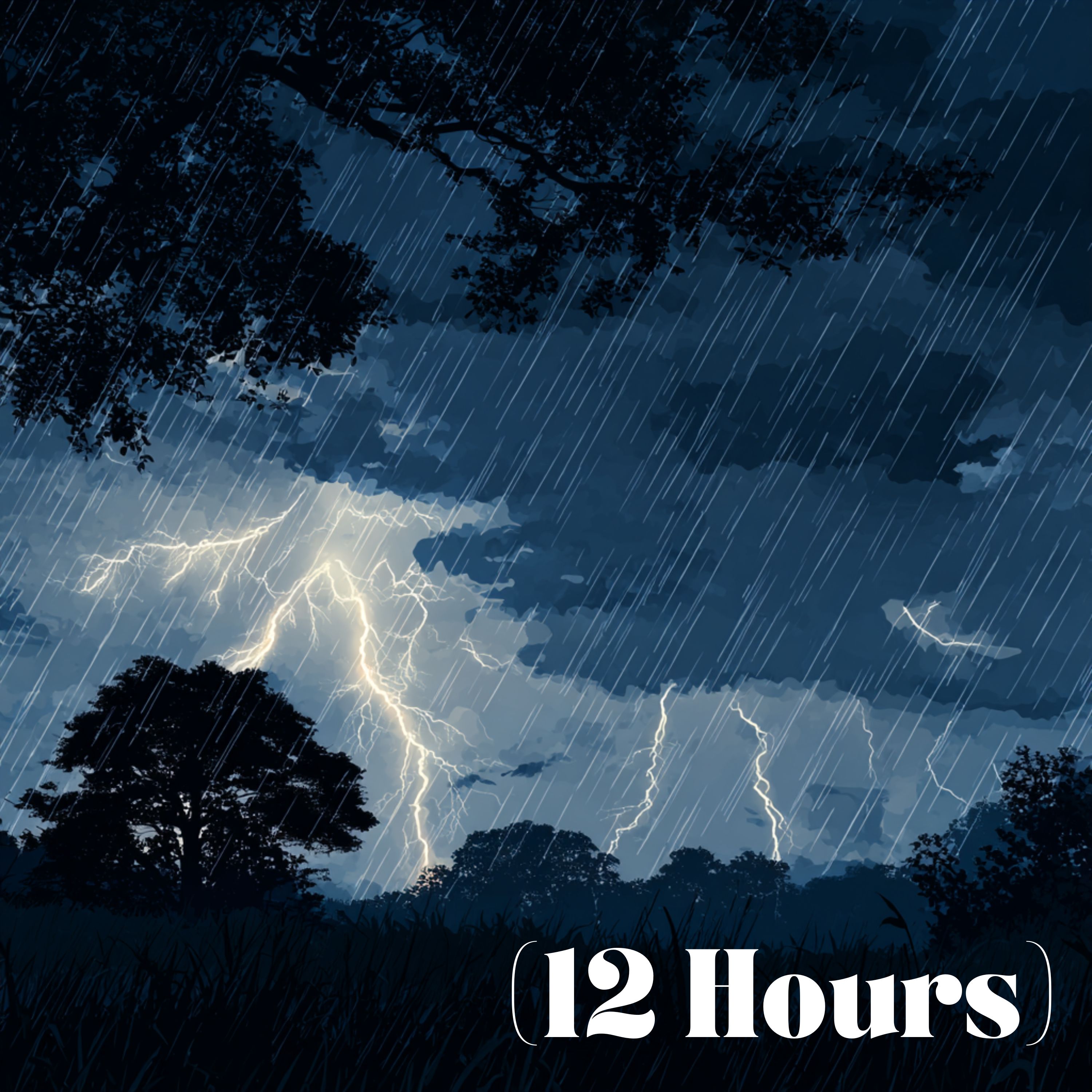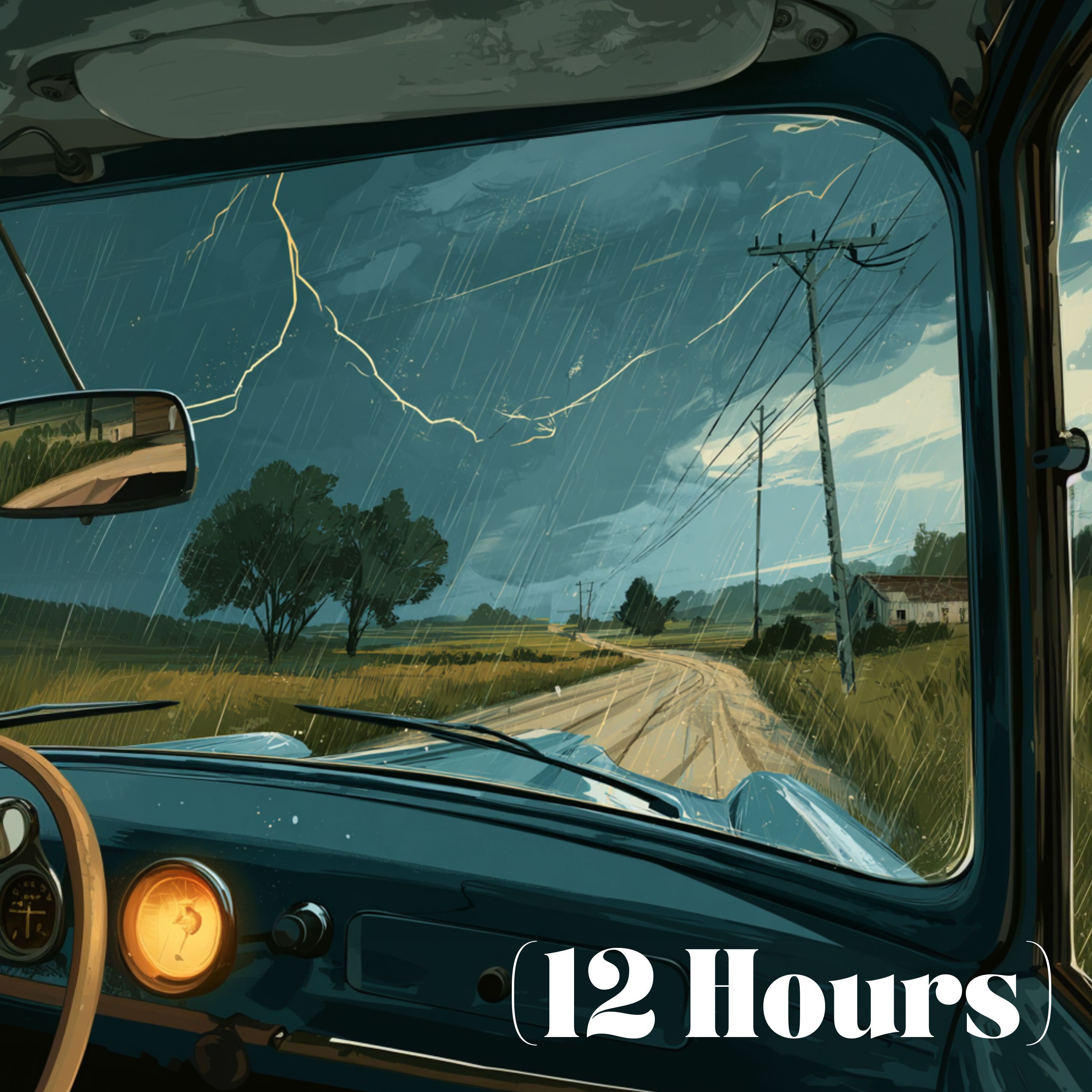The Science of Sleep Sounds: Why Rain and Thunder Help You Relax

Welcome back to the blog! In this post, we'll be diving deep into the science behind why certain sounds, particularly rain and thunder, are so effective at promoting relaxation and sleep. We'll explore the psychological and physiological factors that contribute to this phenomenon, and provide practical tips for incorporating these sounds into your sleep routine. This complements our latest episode, Driving in Rain with Distant Rumbling Thunder | Sleep Sound (12 Hours), which features a 12-hour rain thunder sleep aid soundscape designed to help you relax, focus, or drift off into a peaceful sleep. So, let's delve into the soothing symphony of sleep sounds and unlock the secrets to a better night's rest.
The Science Behind Sleep Sounds
The impact of sound on our bodies and minds is profound. Certain sounds can trigger physiological responses that promote relaxation and sleep. These responses are rooted in our evolutionary history. In the past, predictable, consistent sounds often signaled safety, while sudden or erratic noises indicated potential danger. This is why sounds like rain and thunder are so effective at inducing relaxation – they evoke a sense of security and predictability. When our brains perceive these sounds, they tend to downshift into a more restful state.
From a neurological perspective, sleep sounds stimulate the parasympathetic nervous system, which is responsible for the "rest and digest" response. This system counteracts the "fight or flight" response of the sympathetic nervous system, reducing heart rate, blood pressure, and stress hormones. These physiological changes are crucial for preparing the body for sleep.
Moreover, the frequency and pattern of certain sounds can directly influence brainwave activity. For example, studies have shown that pink noise, which is similar to the sound of rain, can increase slow-wave sleep (SWS), the deepest and most restorative stage of sleep. By entraining brainwaves to a slower frequency, these sounds can help you fall asleep faster and stay asleep longer.
Why Rain Sounds Are Relaxing
Rain sounds have a unique ability to evoke feelings of peace and tranquility. The gentle, rhythmic patter of raindrops is often associated with comfort and security. Think about curling up indoors on a rainy day – the sound of rain creates a cozy atmosphere that encourages relaxation and introspection. This association is deeply ingrained in our psyche, making rain sounds a powerful tool for promoting sleep.
The acoustic properties of rain sounds also contribute to their relaxing effect. Rain produces a broad spectrum of frequencies, often referred to as "pink noise." Pink noise is characterized by equal energy per octave, which means that it contains a balanced mix of high and low frequencies. This balanced sound profile is less jarring than white noise, which contains equal energy at all frequencies. Pink noise is particularly effective at masking distracting noises and creating a more uniform and calming sound environment.
Furthermore, rain sounds are often perceived as natural and organic, which can enhance their relaxing effect. In contrast to artificial or mechanical sounds, rain evokes a connection to nature, which can reduce stress and promote a sense of well-being. This is why many people find rain sounds more soothing than other types of ambient noise.
The Comfort of Thunder
While rain sounds are generally associated with gentleness and calm, the addition of distant thunder can enhance the overall relaxing effect. The low-frequency rumble of thunder provides a grounding and comforting presence. It adds depth and complexity to the soundscape, making it more immersive and engaging. The key is that the thunder should be distant and infrequent, rather than loud and disruptive.
The psychological impact of thunder is also significant. In moderation, it can evoke a sense of awe and wonder, reminding us of the power and beauty of nature. This can be particularly appealing to individuals who appreciate the drama and atmosphere of a storm. Moreover, the rumble of thunder can create a sense of enclosure and protection, making us feel safe and secure indoors.
The combination of rain and thunder creates a dynamic and engaging soundscape that can hold our attention without being overly stimulating. This is essential for promoting relaxation and sleep. The constant variation in the sound keeps the brain engaged, preventing it from focusing on distracting thoughts or worries.
Masking Effect: Blocking Out Distractions
One of the primary reasons why sleep sounds are so effective is their ability to mask distracting noises. In today's world, we are constantly bombarded with sounds that can disrupt our sleep, from traffic noise to loud neighbors. Sleep sounds provide a consistent and predictable background noise that covers up these unwanted sounds, creating a more peaceful and conducive sleep environment.
The masking effect is particularly important for individuals who live in noisy environments or who are sensitive to sound. By drowning out disruptive noises, sleep sounds can help reduce arousal and prevent the brain from becoming overly stimulated. This allows you to relax more easily and fall asleep faster.
The effectiveness of the masking effect depends on the volume and frequency of the sleep sounds. It's important to choose a volume that is loud enough to cover up distracting noises, but not so loud that it becomes disruptive itself. Experiment with different types of sleep sounds to find the ones that are most effective at masking unwanted noises in your particular environment.
Creating a Calming Soundscape
The key to using sleep sounds effectively is to create a calming and consistent soundscape. This involves selecting the right sounds, adjusting the volume, and setting up a consistent routine. Experiment with different combinations of sounds to find the ones that work best for you. Some people prefer the simplicity of pure rain sounds, while others enjoy the added complexity of thunder or other natural sounds.
Consider using a sound machine or a sleep app that allows you to customize the soundscape to your liking. These tools often offer a wide variety of sounds and settings, allowing you to create a personalized sleep environment. You can also adjust the volume, fade-in/fade-out times, and other parameters to optimize your sleep experience.
Consistency is also crucial. Try to use the same sleep sounds every night to create a predictable and calming routine. This will help your brain associate the sounds with sleep, making it easier to fall asleep and stay asleep. Avoid changing the sounds frequently, as this can disrupt your sleep and make it harder to relax.
Enhancing Focus and Relaxation
The benefits of rain and thunder sounds extend beyond sleep. These sounds can also be used to enhance focus and relaxation during the day. Many people find that listening to rain sounds helps them concentrate while working or studying. The consistent, predictable sound environment can block out distractions and promote a sense of calm, allowing you to focus more effectively.
Rain and thunder sounds can also be used for relaxation and stress reduction. Listening to these sounds can help you unwind after a long day, reduce anxiety, and promote a sense of well-being. Try listening to rain sounds while meditating, practicing yoga, or simply relaxing in your favorite chair.
The key to using sleep sounds for focus and relaxation is to choose a volume and soundscape that is conducive to your activity. Avoid using sounds that are too loud or stimulating, as this can be counterproductive. Experiment with different sounds and settings to find the ones that work best for you.
How 'Driving in Rain with Distant Rumbling Thunder' Promotes Sleep
Our latest episode, Driving in Rain with Distant Rumbling Thunder | Sleep Sound (12 Hours), is specifically designed to promote relaxation and sleep. This 12-hour soundscape captures the calming atmosphere of a drive in the rain, with the gentle patter of raindrops, the rhythmic swish of windshield wipers, and the distant rumble of thunder. The combination of these sounds creates a cinematic and immersive experience that can help you drift off into a peaceful sleep.
The episode is designed to be listened to at a low volume, creating a subtle and unobtrusive background noise that masks distractions and promotes relaxation. The consistent and predictable nature of the soundscape helps to soothe the mind and prepare the body for sleep. The distant thunder adds depth and complexity to the sound, making it more engaging and immersive.
We recommend listening to the episode with headphones or speakers, creating a more immersive and enveloping sound environment. You can also experiment with different volume levels to find the one that works best for you. The key is to find a volume that is loud enough to mask distractions, but not so loud that it becomes disruptive.
The Broader Benefits of White Noise & Sleep Sounds
The benefits of white noise and sleep sounds extend beyond relaxation and sleep. These sounds can also be used to improve concentration, reduce stress, and promote a sense of well-being. White noise, in particular, is often used to mask unwanted noises in the workplace or at home, creating a more productive and peaceful environment.
Sleep sounds can also be helpful for individuals with tinnitus, a condition characterized by a persistent ringing or buzzing in the ears. By masking the tinnitus sounds, sleep sounds can help to reduce the perception of tinnitus and improve sleep quality.
Moreover, sleep sounds can be beneficial for babies and children. The consistent and predictable nature of these sounds can help to soothe babies and promote sleep. Many parents use white noise machines or sleep apps to create a calming sleep environment for their children.
Tips for Using Sleep Sounds Effectively
To get the most out of sleep sounds, here are some practical tips:
- Choose sounds that you find relaxing and enjoyable. Experiment with different sounds to find the ones that work best for you.
- Adjust the volume to a comfortable level. The volume should be loud enough to mask distractions, but not so loud that it becomes disruptive.
- Use a sound machine or a sleep app to customize the soundscape to your liking.
- Set up a consistent routine. Try to use the same sleep sounds every night to create a predictable and calming routine.
- Avoid changing the sounds frequently, as this can disrupt your sleep.
- Consider using headphones or speakers to create a more immersive sound environment.
- If you have tinnitus, experiment with different sounds to find the ones that are most effective at masking the tinnitus sounds.
- Be mindful of the impact of sleep sounds on your sleep partner. If your partner is sensitive to sound, consider using headphones.
By following these tips, you can create a personalized sleep environment that promotes relaxation, reduces stress, and improves sleep quality.
In conclusion, the science behind sleep sounds is complex and multifaceted. Rain and thunder sounds, in particular, have a unique ability to evoke feelings of peace and tranquility, mask distracting noises, and promote relaxation and sleep. By understanding the psychological and physiological factors that contribute to this phenomenon, you can harness the power of sleep sounds to improve your overall well-being. Don't forget to check out our latest episode, Driving in Rain with Distant Rumbling Thunder | Sleep Sound (12 Hours), for a 12-hour soundscape designed to help you relax, focus, or drift off into a peaceful sleep. Sweet dreams!






















